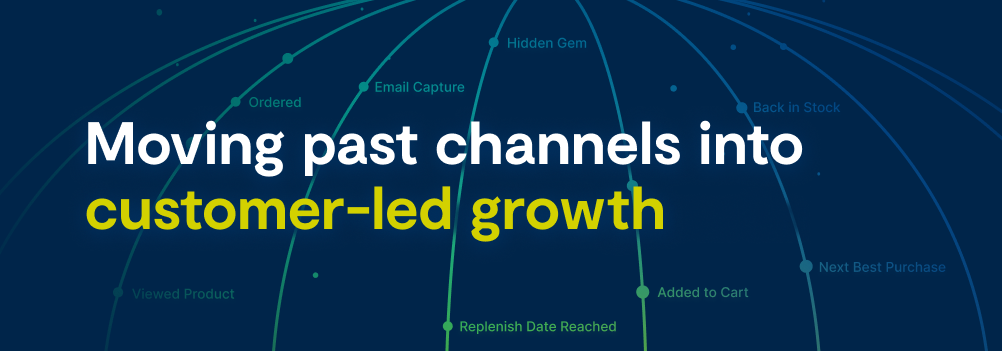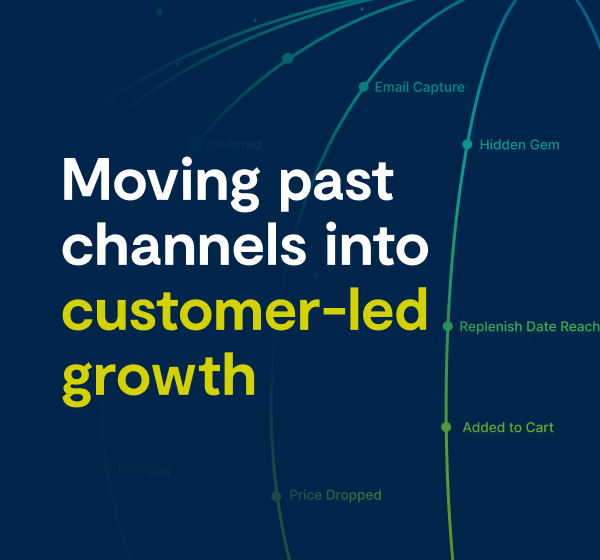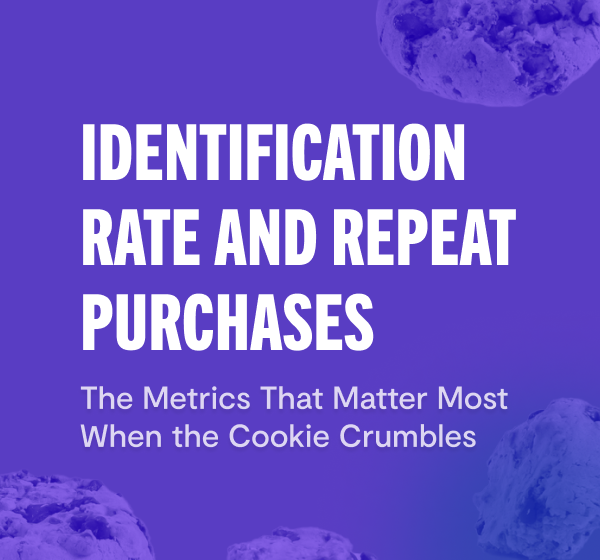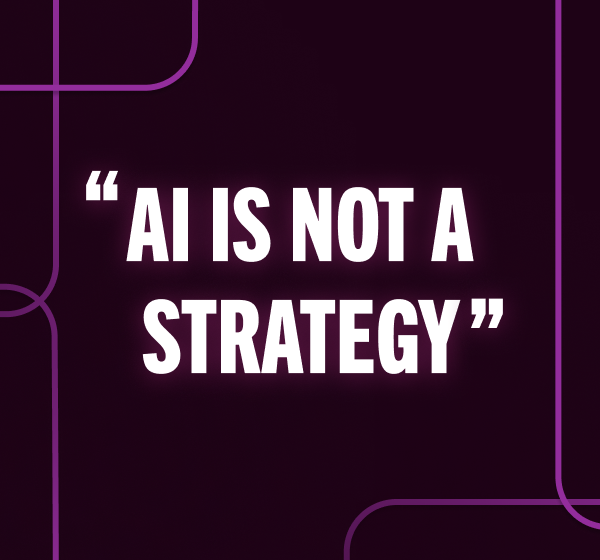

Introducing the New Retail Strategy That Drives Profitable, Customer-Led Growth
Whether it’s toward retention or churn, customers are always moving. Retailers have no choice but to move with them if they want to achieve customer-led growth. The problem is that it’s seemingly never been more difficult, between inflation, rising customer acquisition costs with shrinking budgets, and retention strategies not working as well as they used to.
Introducing customer movement, the solution to that problem.
Customer movement is a marketing philosophy and practice that’s all about “moving” customers through the lifecycle, from unknown shopper to known customer to first-time purchaser to long-term loyalist.
Moving past channels into customer-led growth
Many retail marketers prioritize channel performance such as revenue per email or clickthrough rate. Teams are often organized by channel, which creates siloes and even internal competition for conversion attribution.
This approach is short-sighted — and leads to retailers only having a vague understanding of customer value.
Customer movement is centered on customers rather than channels. This means that success metrics are aligned to customer value: identification rate, retention and reactivation rates, purchase frequency, average order value, and customer lifetime value. It means that customer behavior data, or shopper signals, drive customer communications. And most of all, it means retailers are much better equipped to deliver personalized shopping experiences.
We’ve found that when retailers prioritize customer-led growth, their average three-year customer retention rate is 37% higher than those who lead by channel.
How identification rate powers customer movement
Customer movement is a modernized customer journey, embracing the fact that the journey is totally unique to each shopper. Brands must respond to signals and reach shoppers with contextual messaging that’s relevant to their place in the customer lifecycle.
This is only possible when brands know who shoppers are. Identification is the engine that powers customer movement.
Nobody has ever said, “I’m going to browse couches on my smartphone and then buy one on my laptop.” They simply do. With a strong identification rate, defined as the percentage of site visitors who can be identified by an attribute that’s tied back to a unified profile, retailers realize that “both” of those shoppers are the same person.
That keeps messaging relevant and consistent. Understanding where shoppers are in the journey allows retailers to make their messages even more powerful by combining them with real-time product data such as color, size, category, price, and inventory status.
Customer movement in motion
To put customer movement into practice and achieve customer-led growth, retailers must build a customer behavior analysis to gather customer insights. Stripping out channel metrics, the analysis sorts shoppers into three segments: active customers who have made a purchase in the prior year, inactive buyers who haven’t, and new buyers. Within each segment, retailers can get a holistic view of the quantity and quality of their customer relationships.
Much like the customer journey, a customer movement strategy is unique to each brand. The analysis allows retailers to clearly see their biggest opportunities within the four stages of engagement:
-
- Acquisition: Moving unknown shoppers to identified customers by driving traffic and awareness
- Conversion: Moving non-buyers to first-time buyers to first-time buyers with signal-based personalization
- Retention: Moving first-time buyers to repeat customers by creating individualized experiences and increasing customer value
- Loyalty: Moving repeat customers to loyalists by nurturing existing customers and winning back lapsed buyers
No matter the findings, customer movement provides enormous short-term — while laying the groundwork for long-term, profitable growth.
Want to learn more about customer movement?
Click here to read our whitepaper, Customer Movement: Retail Strategy for Short-Term Gain and Long-Term Profit. The complete guide includes an overview of customer movement, tactics for relevance and engagement, an understanding of how you can reinvent your strategy and budgeting, and a deep dive into the Customer Movement Assessment.
Bluecore’s proprietary Customer Movement Assessment provides an in-depth analysis of the conversion, retention, and reactivation of a retailer’s customer base across several years. The analysis also includes the speed in which customers are moving from lower value to higher value.
Our in-house retail strategy team benchmarks retailers against the broader industry and their peer group based on customer performance metrics including retention and reactivation rates, average order value, purchase frequency, and tenure. We help retailers prioritize what they need to move more customers through the lifecycle, achieving long-term, profitable, customer-led growth.





